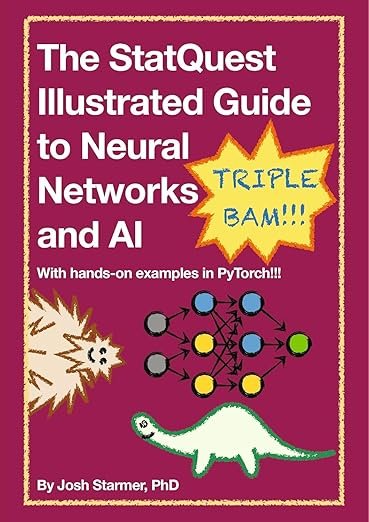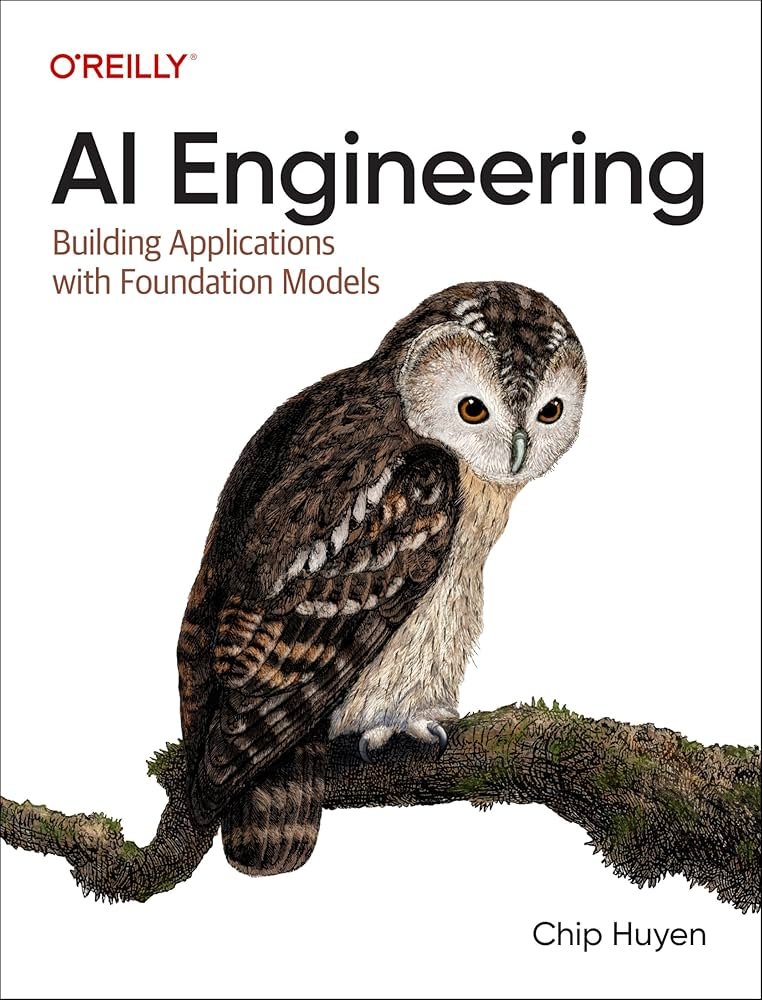- Stars:
- Pages: 363 Pages
- Time to Read: 8 hours
- Authors: Josh Starmer
- Type of Book: Artificial Intelligence
TL;DR
Josh Starmer has done it again. The StatQuest Illustrated Guide to Neural Networks and AI is the perfect and much-needed follow-up to his foundational machine learning guide. This book retains the beloved, intuitive, and highly visual style that made the first one a runaway success, but takes a crucial step forward by integrating hands-on PyTorch coding examples. It masterfully demystifies the “magic” behind modern AI—from basic neural networks to the complex Transformer architecture—by pairing clear conceptual explanations with practical implementation. This is an essential read for anyone ready to move from understanding machine learning to building deep learning models.
What is the book about?
This guide takes the reader on a logical journey into the heart of modern Artificial Intelligence. It starts with the fundamental building block—a simple neural network—and explains its mechanics with the clarity and charm StatQuest is known for. From there, the book systematically builds upon this foundation to explore the advanced architectures that power today’s AI revolution.
You will journey through key concepts like backpropagation and cross-entropy, then move on to specialized networks like Convolutional Neural Networks (CNNs) for image data and Recurrent Neural Networks (RNNs) and Long Short-Term Memory networks (LSTMs) for time-series data. The book culminates in a fantastic, step-by-step breakdown of the Transformer architecture, explaining every component from word embeddings and positional encoding to the self-attention mechanism. What truly sets this volume apart is its dual approach: every major theoretical concept is immediately reinforced with a well-documented PyTorch tutorial, allowing you to not just see how a neural network works, but to build it from scratch.
Key Takeaways!
- Theory Meets Practice: This isn’t just a book of concepts. The seamless integration of PyTorch examples provides an invaluable bridge between understanding the theory and applying it, a feature that empowers readers to become practitioners, not just theorists.
- Demystifying the AI Hype: The book brilliantly deconstructs the complex machinery behind buzzworthy AI like ChatGPT. It breaks down the Transformer architecture into understandable components, making a seemingly impenetrable topic accessible and clear.
- Math That Actually Makes Sense: While the book does not shy away from the essential mathematics that underpin neural networks, it presents them in the classic StatQuest style—visually and intuitively. It builds you up to understand the equations rather than just throwing them at you.
- Build from the “Nuts and Bolts”: By the end of this guide, you will have a deep understanding of the fundamental “nuts and bolts” of neural networks. This knowledge is crucial for anyone who wants to go beyond using off-the-shelf models and learn how to design, build, and tune effective AI systems.
Worth the Read?
An enthusiastic “Read it.”
This book strikes the perfect balance between accessibility and technical depth. It’s a game-changer for anyone who wants to seriously level up their skills in AI and deep learning.
Read this book if:
- You enjoyed the first StatQuest guide and are ready for the next logical step.
- You want a practical guide that teaches both the “why” (theory) and the “how” (coding) of neural networks.
- You are an aspiring AI Engineer who needs to understand the fundamentals behind modern architectures.
- You want to build and tune your own models, not just use pre-existing ones.
A word of caution:
While the explanations are famously clear, this book delves into detailed mechanics and mathematical foundations. As some readers have noted, having a firm grounding in basic math and statistics will be highly beneficial to get the most out of it. It is not an introductory guide for someone with zero mathematical background, but rather the perfect next step for the aspiring practitioner.
Join to get sneak peek into what's happening
I write about books, experiences, product, UX, EdTech, early stage growth, validation – mostly tech. Subscribe if these topics interest you. Once every 15 days emailer. I promise – No spam. (I am known for it otherwise) 😉




